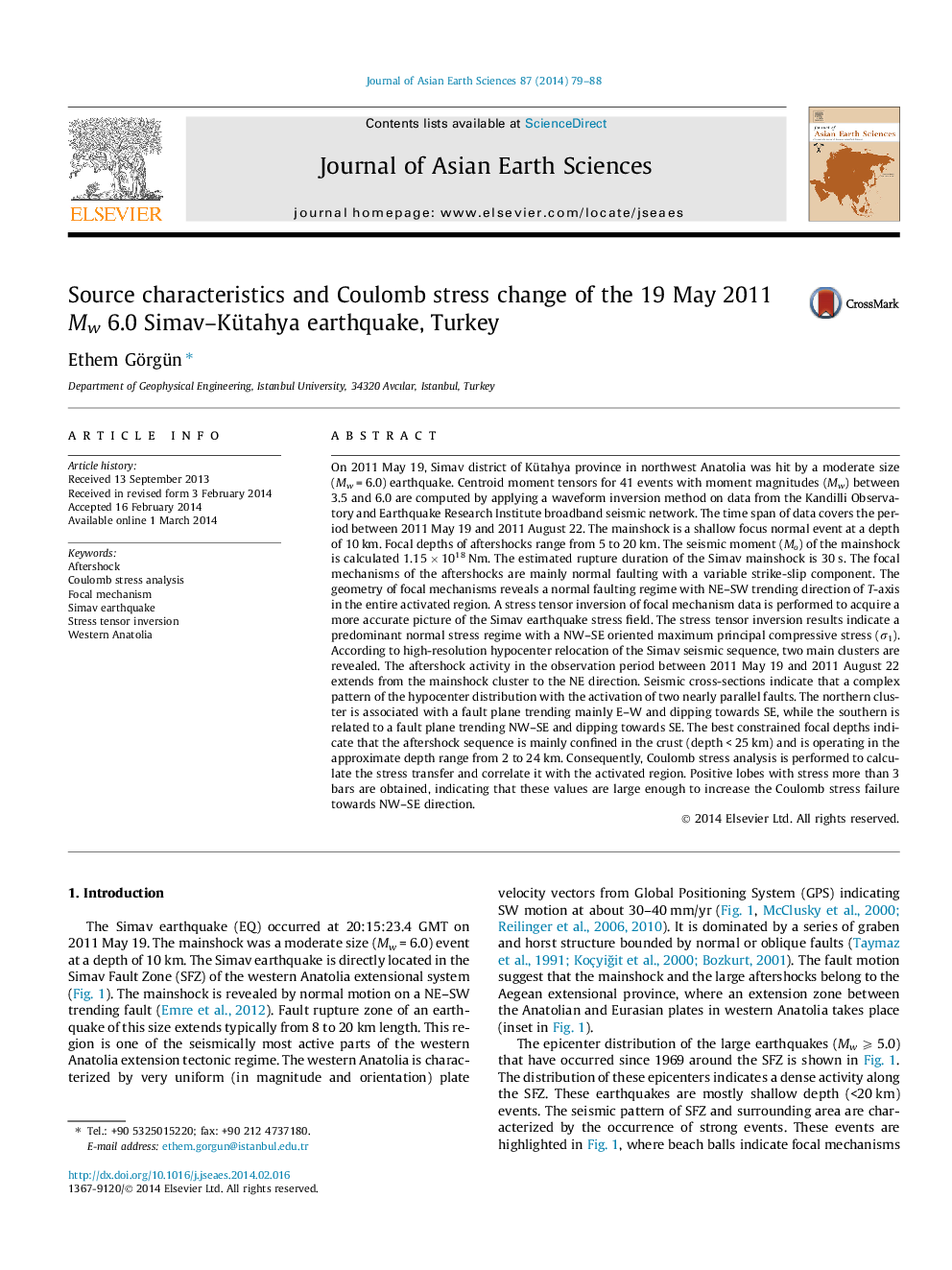| کد مقاله | کد نشریه | سال انتشار | مقاله انگلیسی | نسخه تمام متن |
|---|---|---|---|---|
| 6444416 | 1640381 | 2014 | 10 صفحه PDF | دانلود رایگان |
عنوان انگلیسی مقاله ISI
Source characteristics and Coulomb stress change of the 19 May 2011 Mw 6.0 Simav-Kütahya earthquake, Turkey
دانلود مقاله + سفارش ترجمه
دانلود مقاله ISI انگلیسی
رایگان برای ایرانیان
کلمات کلیدی
موضوعات مرتبط
مهندسی و علوم پایه
علوم زمین و سیارات
زمین شناسی
پیش نمایش صفحه اول مقاله

چکیده انگلیسی
On 2011 May 19, Simav district of Kütahya province in northwest Anatolia was hit by a moderate size (Mw = 6.0) earthquake. Centroid moment tensors for 41 events with moment magnitudes (Mw) between 3.5 and 6.0 are computed by applying a waveform inversion method on data from the Kandilli Observatory and Earthquake Research Institute broadband seismic network. The time span of data covers the period between 2011 May 19 and 2011 August 22. The mainshock is a shallow focus normal event at a depth of 10 km. Focal depths of aftershocks range from 5 to 20 km. The seismic moment (Mo) of the mainshock is calculated 1.15 Ã 1018 Nm. The estimated rupture duration of the Simav mainshock is 30 s. The focal mechanisms of the aftershocks are mainly normal faulting with a variable strike-slip component. The geometry of focal mechanisms reveals a normal faulting regime with NE-SW trending direction of T-axis in the entire activated region. A stress tensor inversion of focal mechanism data is performed to acquire a more accurate picture of the Simav earthquake stress field. The stress tensor inversion results indicate a predominant normal stress regime with a NW-SE oriented maximum principal compressive stress (Ï1). According to high-resolution hypocenter relocation of the Simav seismic sequence, two main clusters are revealed. The aftershock activity in the observation period between 2011 May 19 and 2011 August 22 extends from the mainshock cluster to the NE direction. Seismic cross-sections indicate that a complex pattern of the hypocenter distribution with the activation of two nearly parallel faults. The northern cluster is associated with a fault plane trending mainly E-W and dipping towards SE, while the southern is related to a fault plane trending NW-SE and dipping towards SE. The best constrained focal depths indicate that the aftershock sequence is mainly confined in the crust (depth < 25 km) and is operating in the approximate depth range from 2 to 24 km. Consequently, Coulomb stress analysis is performed to calculate the stress transfer and correlate it with the activated region. Positive lobes with stress more than 3 bars are obtained, indicating that these values are large enough to increase the Coulomb stress failure towards NW-SE direction.
ناشر
Database: Elsevier - ScienceDirect (ساینس دایرکت)
Journal: Journal of Asian Earth Sciences - Volume 87, 15 June 2014, Pages 79-88
Journal: Journal of Asian Earth Sciences - Volume 87, 15 June 2014, Pages 79-88
نویسندگان
Ethem Görgün,